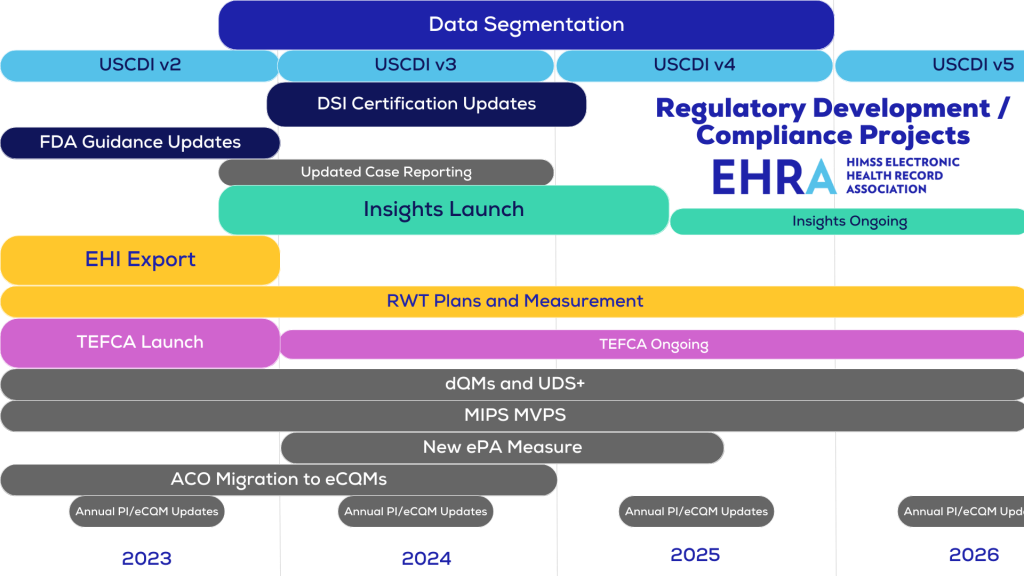By the EHR Association Public Policy Leadership Workgroup
Leading the digital transformation of the healthcare industry, electronic health records (EHRs) and health information technology (IT) play a pivotal role in streamlining patient care and improving healthcare outcomes. This transformation comes with a host of regulatory and compliance requirements that EHR and health IT developers must navigate – this timeline highlights the challenges and complexities of a portion of the upcoming projects.

The Evolving Landscape
The EHR Association’s timeline illustrates the multifaceted nature of health IT compliance and regulatory requirements. Developers must not only adhere to national standards set by agencies including the Office of the National Coordinator for Health IT (ONC), the Centers for Medicare and Medicaid Services (CMS), and the Food and Drug Administration (FDA), but also contend with state-specific requirements. These demands on development resources are constantly evolving, creating a dynamic and complex environment.
The strain on resources becomes increasingly burdensome when navigating the interaction between state and federal regulations. In addition to the initiatives outlined in the timeline, states continue to introduce their own distinct mandates, often with timelines and conditions that overlap with or conflict with national programs.
Beyond Compliance: Meeting User Needs
EHR developers face the dual challenge of balancing compliance obligations while striving to also meet the diverse needs of their users and healthcare provider organizations. In addition to the regulatory frameworks set by various agencies, developers are constantly working to enhance their systems to better support patient care. This includes responding to user requests for new features and functionalities that can improve the efficiency and safety of healthcare delivery.
Acknowledging these cumulative burdens, the EHR Association actively engages in ongoing advocacy efforts. By collaborating with regulatory agencies and providing public comments, we aim to strike a balance between meeting compliance requirements and ensuring that EHR systems continue to be innovative tools for healthcare professionals, driving advancements in patient care and the digital healthcare landscape.
Getting Involved
For EHR developers facing the challenges of this complex regulatory landscape, the EHR Association offers opportunities for involvement and support with access to resources, general membership meetings, and participation in public policy and other workgroups. These enable Association members to have a voice in shaping the future of EHR compliance and to connect with others navigating similar challenges. In doing so, we can help ensure that health IT systems continue to enhance patient care and improve outcomes in this ever-evolving digital age.

1 Comment